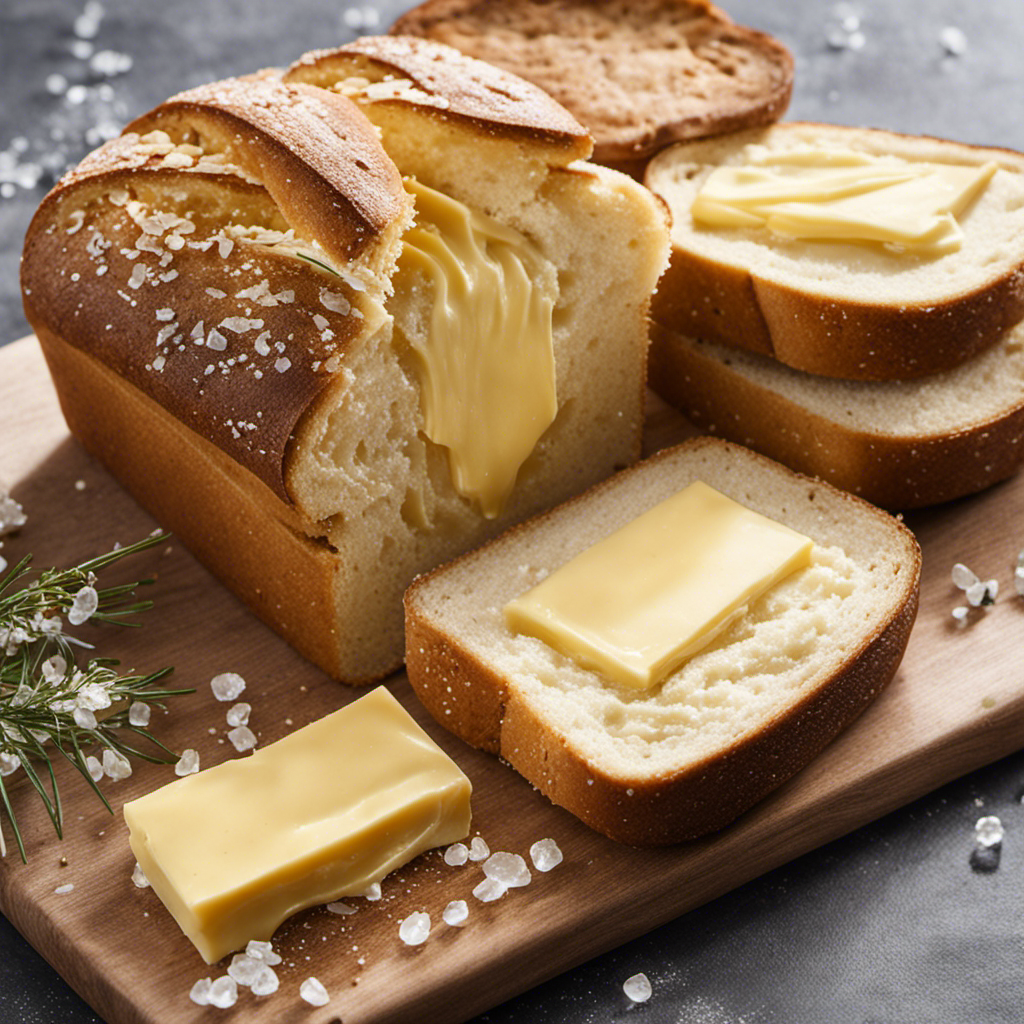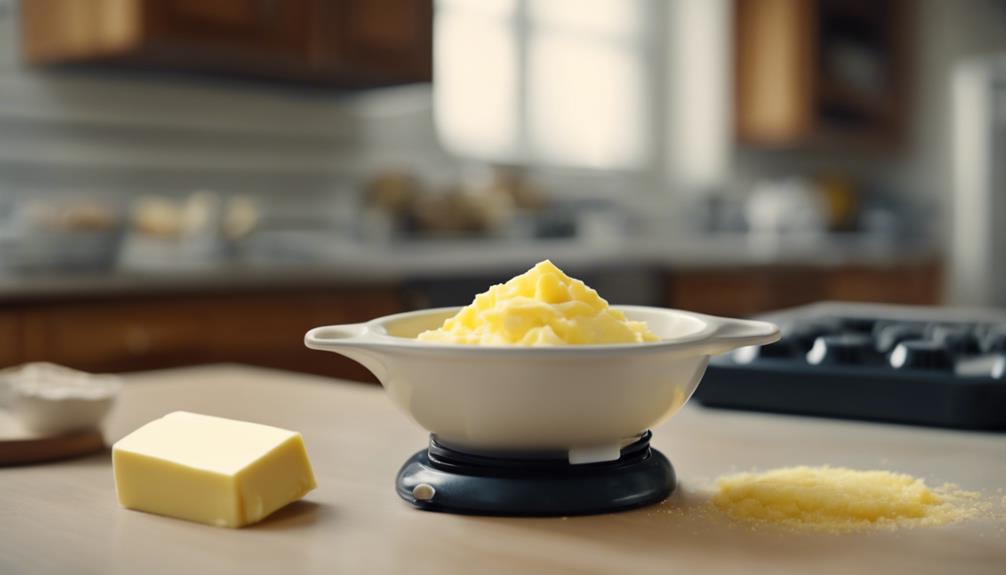Hello everyone! Have you ever wondered about the name of the deliciously creamy substance that comes with crab dishes? Don’t worry, because I’m here to uncover the smooth secrets.
In this article, we’ll dive headfirst into the world of crab butter – its origins, ingredients, and all the different ways it’s made.
And hey, did you know that this delectable treat also comes with some surprising health benefits? So, buckle up and get ready to indulge in some seriously mouthwatering knowledge.
Let’s butter up some crabs, shall we?
Key Takeaways
- The exact origins of crab butter are uncertain, with various theories suggesting it may have originated in coastal regions or been discovered accidentally.
- Crab butter is a popular delicacy in many cultures worldwide and is made using crab meat as the main ingredient, along with butter, lemon juice, and mayonnaise.
- Commonly used seasonings for crab butter include Old Bay seasoning, garlic powder, lemon zest, dried parsley, and cayenne pepper, which enhance the flavor profile.
- Variations of crab butter can include the addition of melted cheese, such as cheddar, Gruyere, or blue cheese, to create a rich and creamy twist.
Origin of Crab Butter
The origin of crab butter is still uncertain. While there are various theories surrounding its history, no concrete evidence exists to pinpoint its exact origins.
Some believe that crab butter originated in coastal regions where crabs were abundant, while others argue that it may have been discovered accidentally during the preparation of crab dishes.
Despite the lack of a definitive origin story, crab butter has become a popular delicacy in many cultures around the world. Its rich and savory flavor adds depth to seafood dishes, making it a favorite among seafood enthusiasts.
Whether it was created out of necessity or culinary experimentation, the history of crab butter remains a mystery, leaving us to enjoy its deliciousness without knowing its true beginnings.
Ingredients Used in Crab Butter
When it comes to making delicious crab butter, there are a few key ingredients that are essential.
One of the main ingredients is, of course, crab meat, which provides the rich and creamy base for the butter.
Other important ingredients include butter, lemon juice, and mayonnaise, which add flavor and help to bind everything together.
Additionally, there are many variations of crab butter that can be made by incorporating different seasonings such as Old Bay, garlic, or hot sauce, to suit individual tastes.
Key Crab Butter Ingredients
To make crab butter, you’ll need a few key ingredients. The primary ingredient, of course, is crab meat. The flavors of the crab meat are enhanced by the addition of butter, which adds richness and creaminess to the dish.
The cooking technique used to make crab butter involves melting the butter in a pan and then adding the crab meat. The heat from the pan helps to infuse the flavors of the crab into the butter, creating a delicious and flavorful sauce.
Once the crab meat is cooked and the flavors have melded together, the crab butter can be used as a topping for seafood dishes or as a dipping sauce.
Now, let’s move on to the commonly used seasonings that can be added to enhance the flavor of crab butter.
Commonly Used Seasonings
For a delicious and flavorful twist, try adding commonly used seasonings to enhance your crab butter. Here are some popular seasonings to consider:
- Old Bay seasoning: This classic blend of herbs and spices adds a zesty kick to your crab butter.
- Garlic powder: Adds a savory, garlicky flavor that complements the sweetness of the crab.
- Lemon zest: Brightens up the butter with a citrusy tang.
- Dried parsley: Adds a touch of freshness and a hint of color to your crab butter.
- Cayenne pepper: If you like a bit of heat, a pinch of cayenne pepper will give your crab butter a spicy kick.
These seasonings can be mixed into the butter along with the crab meat or sprinkled on top as a garnish. They can be used in various common crab butter recipes, such as crab-stuffed mushrooms or crab cakes.
Now, let’s explore some variations of crab butter that you can try.
Variations of Crab Butter
One popular variation of crab butter is adding melted cheese for a rich and creamy twist. This variation adds depth to the flavor profile of the crab butter, creating a delightful combination of savory crab and gooey cheese.
The melted cheese can be incorporated into the crab butter using various cooking techniques. One technique is to melt the cheese separately and then mix it with the already prepared crab butter. Another technique is to add the cheese directly to the crab butter while it is still warm, allowing it to melt and blend in naturally.
The choice of cheese can also vary, with options like cheddar, Gruyere, or even blue cheese, each imparting a unique flavor to the crab butter.
These variations of crab butter with melted cheese offer a delightful twist to a classic dish.
Traditional Methods of Making Crab Butter
When it comes to crab butter, there are various alternative recipes that can be explored to add a unique twist to this classic dish. From using different types of herbs and spices to incorporating unexpected ingredients, the possibilities are endless.
Additionally, finding the perfect seasoning for crab butter is crucial to enhance its flavor profile, and experimenting with different combinations can lead to discovering the best seasonings that complement the natural sweetness of the crab meat.
Alternative Crab Butter Recipes
Craving a different twist on traditional crab butter? Try out these alternative recipes!
Here are five unique ways to make crab butter using alternative cooking methods and incorporating unique flavor combinations:
-
Grilled Crab Butter: Grill the crab legs and then mix the softened butter with lemon zest, garlic, and parsley. Spread the mixture over the grilled crab legs for a smoky and zesty flavor.
-
Spicy Crab Butter: Add a kick to your crab butter by mixing in some hot sauce, cayenne pepper, and crushed red pepper flakes. Perfect for those who love a bit of heat.
-
Citrus Herb Crab Butter: Combine softened butter with lemon juice, fresh herbs like thyme and rosemary, and a hint of orange zest. This refreshing flavor combination pairs well with any seafood dish.
-
Asian-Inspired Crab Butter: Incorporate flavors like soy sauce, ginger, and sesame oil into your crab butter for an Asian twist. Serve it with steamed dumplings or sushi rolls for a flavorful dipping sauce.
-
Roasted Garlic Crab Butter: Roast a head of garlic until it becomes soft and creamy, then mix it with butter and crab meat. The roasted garlic adds a rich and savory taste to your crab butter.
These alternative recipes offer a variety of flavors and cooking methods to elevate your crab butter experience. Give them a try and enjoy the unique twists they bring to this classic seafood condiment.
Best Crab Butter Seasonings
To enhance the flavor of your crab butter, try incorporating seasonings like Old Bay, garlic powder, and paprika. These spices add a burst of flavor to the rich and creamy crab butter, making it the perfect accompaniment for your seafood dishes.
Old Bay, a classic seafood seasoning, brings a unique blend of spices that complement the sweetness of the crab. Garlic powder adds a savory note, while paprika lends a subtle smokiness. When making crab butter at home, it’s important to find the right balance of seasonings to suit your taste preferences. Experiment with different ratios until you find the perfect combination.
Now that we’ve explored the best seasonings for crab butter, let’s dive into the various variations of crab butter recipes.
Variations of Crab Butter Recipes
If you’re looking for a new twist on crab butter recipes, try adding some spicy chili flakes for an extra kick. The combination of the rich, creamy crab butter with the fiery heat of chili flakes creates a flavor explosion that will leave your taste buds tingling.
But chili flakes are just one way to elevate your crab butter game. Here are some other unique crab butter flavors and cooking techniques to consider:
- Incorporate fresh herbs like parsley, dill, or chives for a refreshing burst of flavor.
- Experiment with different spices such as smoked paprika, cayenne pepper, or Old Bay seasoning.
- Add a splash of citrus juice, like lemon or lime, to brighten up the buttery richness.
- Try mixing in a spoonful of honey or maple syrup for a touch of sweetness.
- For a savory twist, add minced garlic, shallots, or even a dash of soy sauce.
Health Benefits of Consuming Crab Butter
Indulging in this creamy delight can provide you with a range of health benefits.
Crab butter, also known as crab roe or crab fat, is the yellowish-orange substance found in female crabs. Although it may not be as well-known as other seafood delicacies, crab butter is packed with nutritional value.
It is a rich source of omega-3 fatty acids, which are essential for heart health and brain function. Additionally, crab butter is high in vitamins and minerals, including vitamin B12, copper, and zinc.
These nutrients play a crucial role in boosting immunity, maintaining healthy skin, and supporting the body’s metabolism.
Incorporating crab butter into your diet can be a delicious way to enhance your overall well-being.
Serving Suggestions for Crab Butter
When serving crab butter, try pairing it with freshly baked bread for a delectable combination. The rich and creamy texture of the crab butter spreads effortlessly onto warm, crusty bread, enhancing its flavors.
Here are some serving suggestions and flavor pairings to elevate your crab butter experience:
- Spread it on crackers for a quick and easy appetizer.
- Use it as a filling for stuffed mushrooms for a flavorful and elegant appetizer.
- Add a dollop to pasta dishes for a luxurious and indulgent sauce.
- Use it as a topping for grilled fish or seafood to enhance their natural flavors.
- Incorporate it into a creamy seafood dip for a crowd-pleasing party snack.
These serving suggestions and flavor pairings will help you make the most of your crab butter, whether you’re looking for a simple snack or an impressive dish to impress your guests.
Frequently Asked Questions
Can Crab Butter Be Made With Imitation Crab Meat?
Yes, imitation crab meat can be used to make crab butter. However, it is important to note that the taste and texture may differ from traditional crab butter. There are also alternative spreads available for those who prefer non-crab options.
Is Crab Butter Safe to Eat for People With Shellfish Allergies?
Crab butter is a creamy, flavorful condiment made from crab meat. It is safe for people with shellfish allergies to eat as long as they do not have a specific allergy to crab.
How Long Can Crab Butter Be Stored in the Refrigerator?
When it comes to storing crab butter in the refrigerator, it’s important to consider its longevity. To ensure the best storage methods, it is recommended to consume crab butter within 3-4 days of refrigeration.
Can Crab Butter Be Frozen for Future Use?
Yes, crab butter can be frozen for future use. It is a great way to extend its shelf life and have it readily available. However, it cannot be canned for long term storage, and it is not a suitable substitute for regular butter in recipes.
Are There Any Vegan Alternatives to Crab Butter Available in the Market?
Vegan alternatives to crab butter are available in the market. These plant-based spreads offer similar flavors and textures, while also providing numerous health benefits. So, if you’re looking for a cruelty-free option, try these vegan alternatives.
Conclusion
In conclusion, crab butter is a delicious and versatile condiment that adds a rich and savory flavor to various dishes. Its origin can be traced back to coastal regions where crabs are abundant.
The traditional methods of making crab butter involve extracting the flavorful fat from the crab’s body and mixing it with other ingredients like herbs and spices.
One interesting statistic is that consuming crab butter in moderation can provide essential omega-3 fatty acids, which promote heart health.
So, why not give crab butter a try and elevate your culinary experience with its delectable taste?










